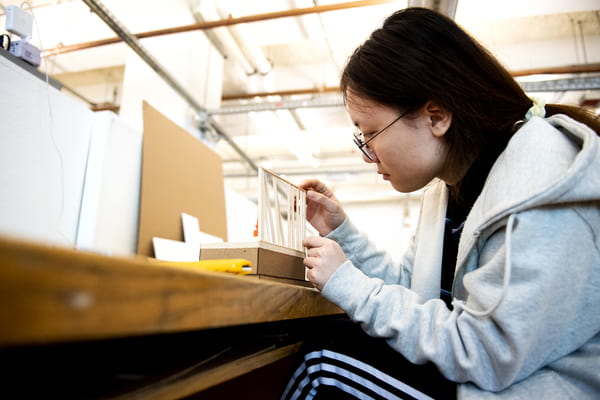2013 Issue

"Gender Variation in Sign Production by Users of American Sign Language" Abstract
This study examined variation of sign production between genders of ASL users. The goal was to find new variations as well as to support previous research done on gender variation. There are ten participants in this study who are D/deaf: five male and five female. Each participant was asked to sign the same story while being recorded. After the recordings were collected, the location of the signs used, the usage of ASL features, and story length were compared. The results include that the females signed their stories for a longer period of time than the males; the majority of the females used hand listing while none of the males did; and, the females used more pronouns than the males. There were also lexical variations, the main one being that females tended to produce their signs in a higher location than the males. More research needs to be conducted in this area and on ASL in general.
Heather Hamilton is from Horsham, Pennsylvania. She graduated summa cum laude from Bloomsburg University of Pennsylvania in 2013 with a Bachelor of Science in American Sign Language/English Interpreting and a concentration in the Education of the Deaf and Hard of Hearing. She was also awarded the Outstanding Senior Award for the interpreting department. Heather would like to thank Dr. Jessica Bentley-Sassaman for her help, guidance, and support throughout the process of this research. Without her, this would not have been possible.
Correspondence regarding this article should be sent to Heather Hamilton at hmh15050@huskies.bloomu.edu.

"The Effect of Work Experience on Interpreting in Mental Health Settings" Abstract
This study addresses the effect of experience on the decision-making of interpretation in the mental health setting. Utilizing a case study approach, the work of two ASL-English interpreters was analyzed. One interpreter had extensive experience interpreting in the mental health setting, and the other had limited experience. The participants interpreted a segment of a simulated therapy session and answered a series of questions about their thought process during their interpretation. The results show that the experienced interpreter 1) used more time to interpret the session, 2) requested more clarifications, 3) incorporated more pauses, and 4) demonstrated a broader range of comparisons than the non-experienced interpreter. The findings suggest that context-specific experience plays a positive role in creating richer ASL interpretations in mental health settings.
Cenée Dawkins received an Associates’ degree in Interpreting/ASL Education from Columbus State Community College in 2009 and Bachelors in Interpretation, with a minor in Psychology from Gallaudet University in 2012. From 2007 to 2013 she worked for the non-profit organization Deaf Initiatives, and its affiliate, a social-purpose business called Keepsake Theme Quilts as an interpreter, customer care representative, and outreach coordinator. She currently works as an ASL-English interpreter for InterpretingPlus in Columbus, OH. Cenée would like to thank Dr. Mary Thumann, Dr. Deborah Maxwell McCaw, Dr. Brenda Nicodemus the Interpreting Department and the Honors Department for their support during the research project.
Correspondence regarding this article should be sent to Cenée E. Dawkins at cenee.dawkins@gmail.com
